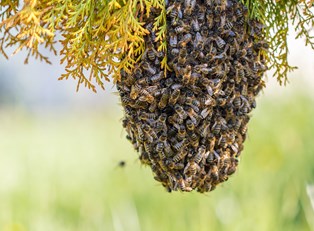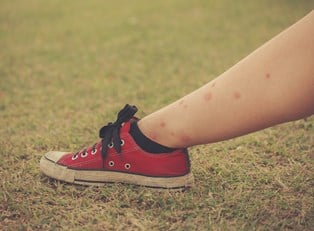If your yard has a bee, wasp, or hornet hive, it might be time to remove it. More often than not, homeowners can remove the hives themselves without having to contact a professional. Such an endeavor won’t be without its risks, though. Namely: getting stung.
Locate the Nests and Hives
Your first step will be evaluating the scale and source of the problem. This means locating the hives, understanding how many hives you have, and determining just what kind of insect the hives might belong to. Check cracks in the structure of your home, under awnings or eves, in bushes, under leaves, or anywhere else that is sheltered or provides protection from the weather.
Evaluate Your Options
If the hive belongs to honey bees, who are in decline, you should have a local beekeeper come to your residence and relocate them rather than exterminating the hive yourself. The help of a professional removal service will also be needed if the problem is extreme, the hive is too large, there are too many hives, or you have allergies to these insects.
Prepare
The next step in preparing to remove a hive or nest yourself is taking the necessary protective measures. This means wearing gloves, hats, goggles, netting, or anything else you need to cover and protect your skin from head to toe. Spraying repellent on yourself in addition to wearing multiple layers of clothing will leave you most protected.
After you’ve located all the nests and determined that it can be done safely, you can begin the removal process. To begin, you’ll need to use an insecticide dust or spray. The specific brand is up to you, as many variations are commercially available. Without a duster to disperse the insecticide, the best alternative is to use an aerosol spray, like Real-Kill or Spectracide.
Remove the Nests and Hives
The best time to apply the dust is during the evening hours when these insects will be more lethargic. To begin, quickly spray a generous coat into the opening or any openings in the hive. It’s very possible that this will cause the insects to swarm out and around the hive. If this happens, know that it is normal, and you merely need to keep as much distance as possible from the hive.
Once this is done, you should leave the hive alone for a day and then repeat the process to ensure that they are all dead. After you’re certain all the insects have been killed, your next move will be to destroy and dispose of the hive.
Clean the area thoroughly and repair any structural damage caused by the hive. This will effectively prevent the insects from returning to the area.



